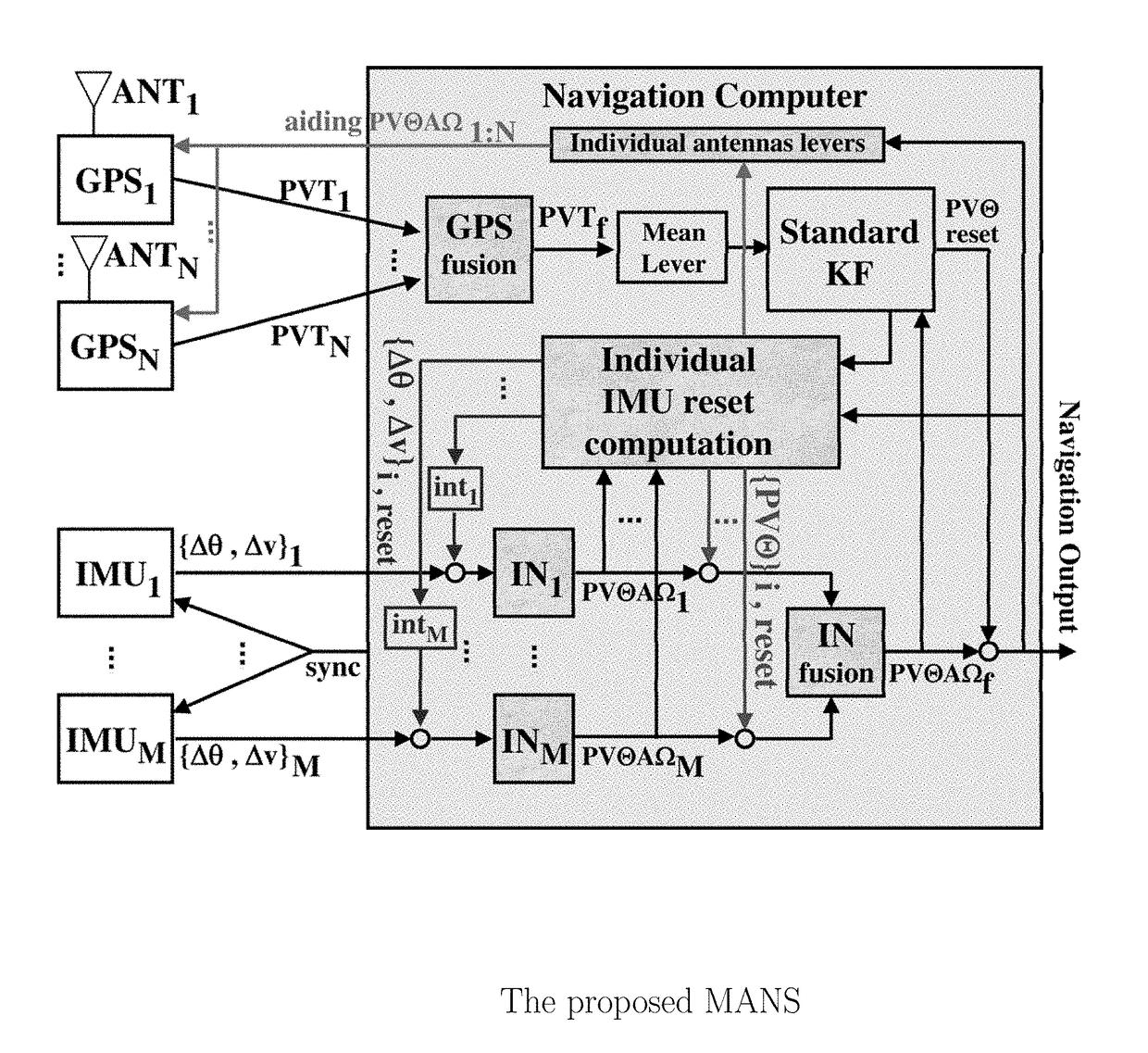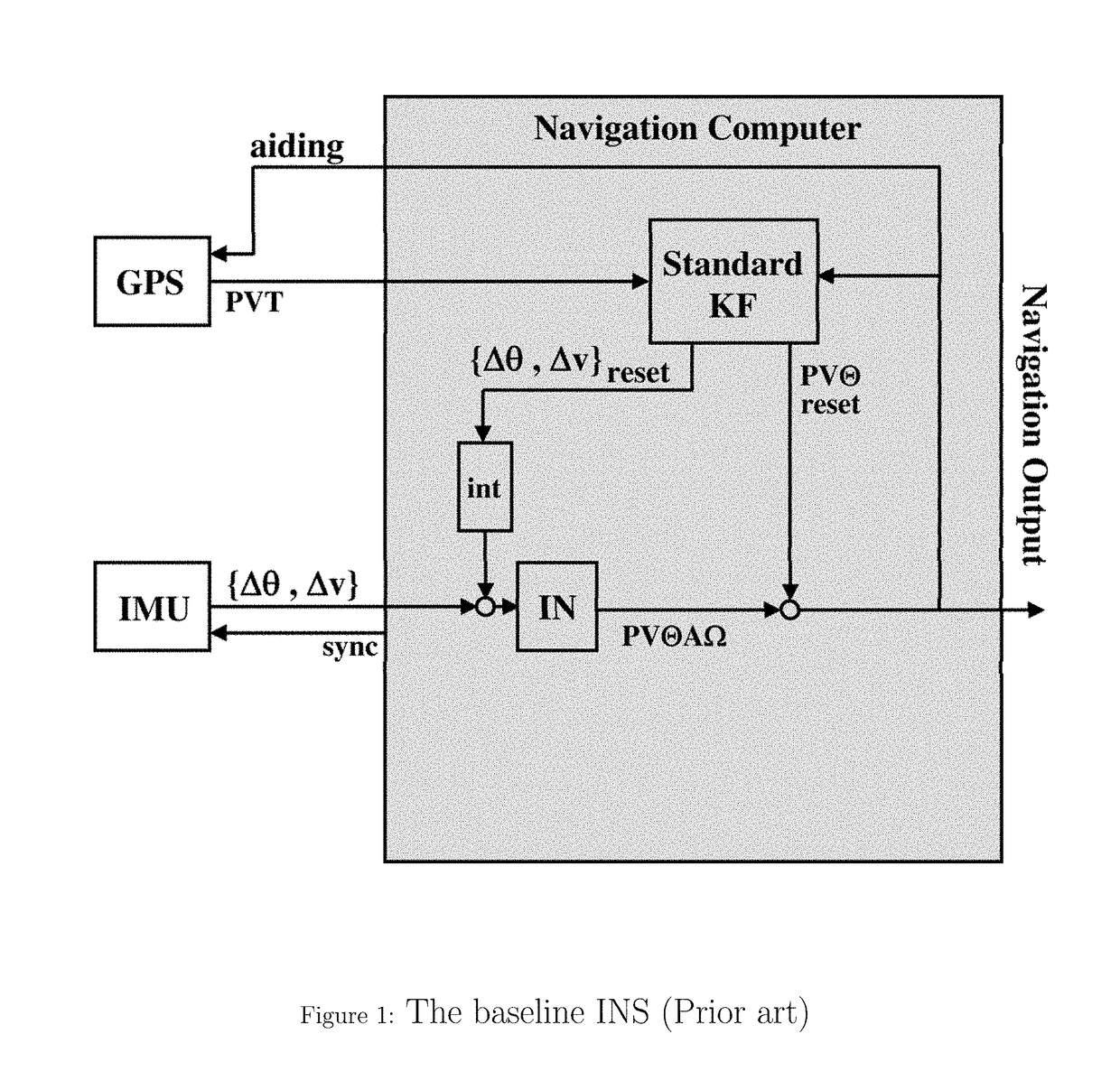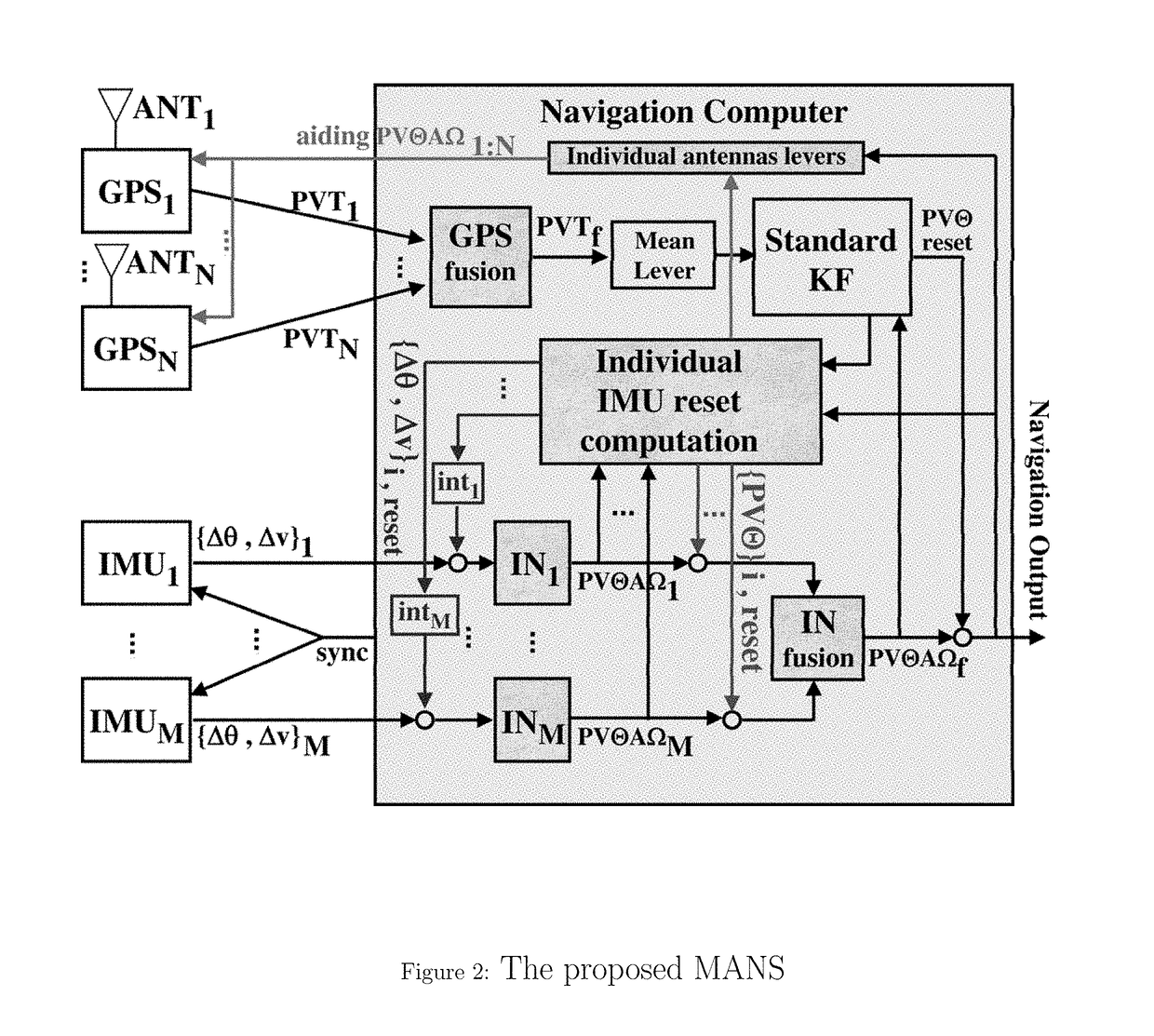GPS-aided inertial navigation method and system
a technology of inertial navigation and inertial navigation, which is applied in the field of multisensor (multiimu and multigps) gps-aided inertial navigation system and method, can solve the problems of both burden and complexity, and the computational burden and software complexity are just a little greater, so as to achieve minimal additional computational burden, improve navigation accuracy, and reduce the effect of software changes
- Summary
- Abstract
- Description
- Claims
- Application Information
AI Technical Summary
Benefits of technology
Problems solved by technology
Method used
Image
Examples
Embodiment Construction
The Baseline INS
[0023]The INS assumed to exist (FIG. 1), and to be at hand and well-recognized, includes a single standard IMU, which provides coning and sculling-corrected {Δθ, Δν}; a single GPS receiver (with a single antenna), which provides {P, V, T} fixes; and a navigation computer which runs both an inertial navigation (IN) scheme and a standard navigation filter with the 15 standard error states {PVΘAΩ}. The filter customarily is a Kalman filter [KF], but may be some other filter, e.g. an unscented KF, an H∞ filter, a particle filter, etc. The position and velocity GPS fixes are corrected for the lever-arm effect of the body-vector between the IMU and antenna locations. These lever-arm corrections are performed, in the standard fashion, before passing the fixes to the filter. The computer uses the 1PPS signal from the GPS receiver, together with the receiver's time message, to adapt its own clock to GPS time and identify the fixes' timings. The computer also sends sync signal...
PUM
 Login to View More
Login to View More Abstract
Description
Claims
Application Information
 Login to View More
Login to View More - R&D
- Intellectual Property
- Life Sciences
- Materials
- Tech Scout
- Unparalleled Data Quality
- Higher Quality Content
- 60% Fewer Hallucinations
Browse by: Latest US Patents, China's latest patents, Technical Efficacy Thesaurus, Application Domain, Technology Topic, Popular Technical Reports.
© 2025 PatSnap. All rights reserved.Legal|Privacy policy|Modern Slavery Act Transparency Statement|Sitemap|About US| Contact US: help@patsnap.com



